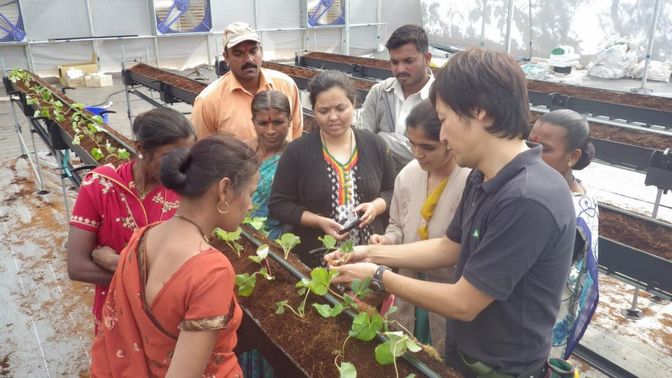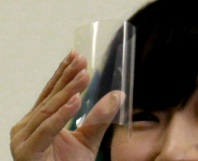Technology:
 NEC built a
1,000-square-meter water-cooling greenhouse to cultivate strawberries in the
suburbs of Pune located in the western part of India last autumn. The company is marketing
its “Agricultural Cloud” system in newly industrialized countries. The “Agricultural
Cloud” system is designed to increase agricultural productivity with the help
of NEC’s information technology. It is for soil hydraulic culture that does not
need soil. It controls the temperature inside the greenhouse and nutrient
elements automatically using computers. The same species that is cultivated in Japan is being cultured in India on an
experimental basis. The equipment for the cultivation was developed jointly by
NEC and GRA that is an agricultural production corporation.
NEC built a
1,000-square-meter water-cooling greenhouse to cultivate strawberries in the
suburbs of Pune located in the western part of India last autumn. The company is marketing
its “Agricultural Cloud” system in newly industrialized countries. The “Agricultural
Cloud” system is designed to increase agricultural productivity with the help
of NEC’s information technology. It is for soil hydraulic culture that does not
need soil. It controls the temperature inside the greenhouse and nutrient
elements automatically using computers. The same species that is cultivated in Japan is being cultured in India on an
experimental basis. The equipment for the cultivation was developed jointly by
NEC and GRA that is an agricultural production corporation.
International cooperation
between India and Japan is under way.
Indian strawberries
are hard, and they have low sugar content. They are sold for 110-145 yen per kilogram,
whereas Japanese strawberries are 5-6 times higher in price than Indian
strawberries. Because of the excellent textures, however, Japanese strawberries receive
an inrush of large orders from luxurious hotels. NEC wishes women in rural
areas of India to be a strawberry
producer for the promotion of women’s status in India
besides marketing Japanese strawberries to the wealthy class in India. The video of NEC's agricultural cloud system is available here.







